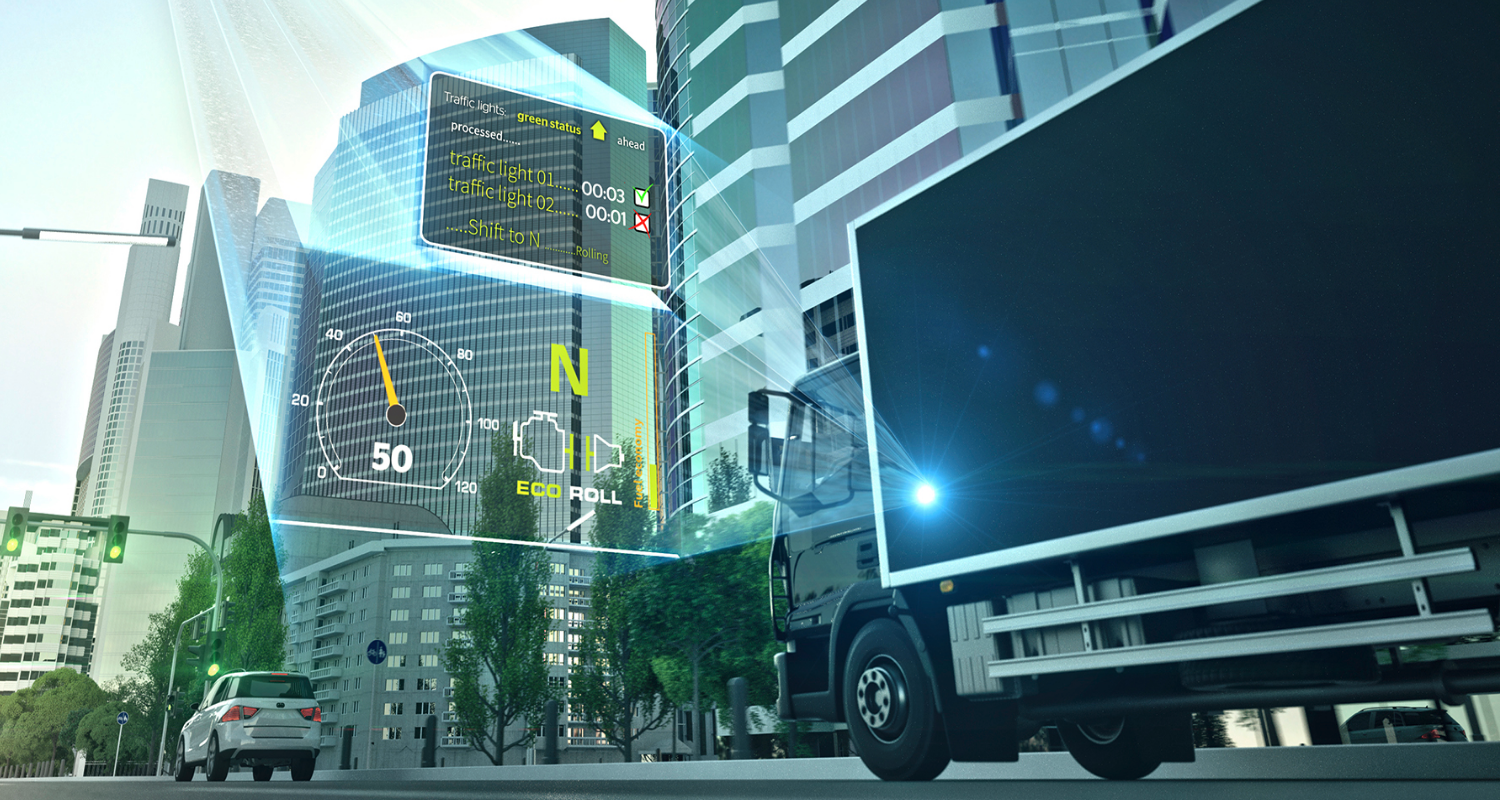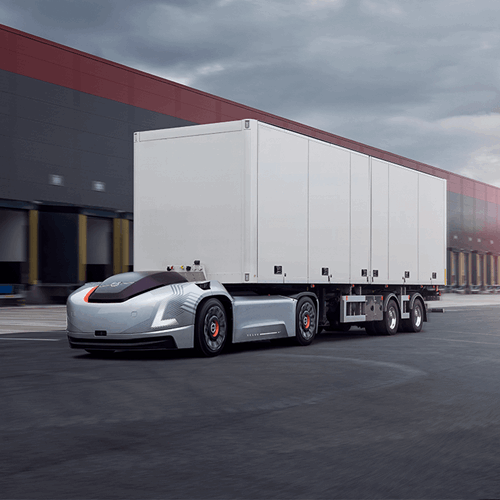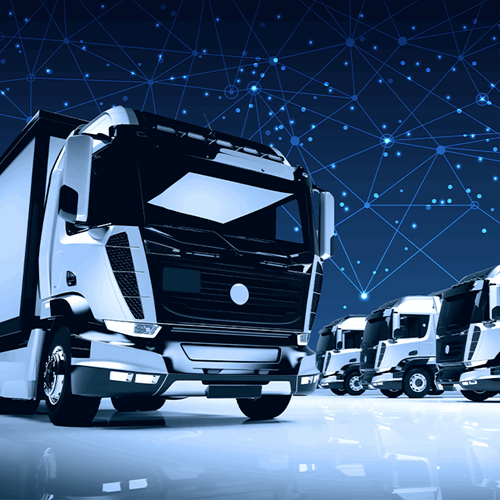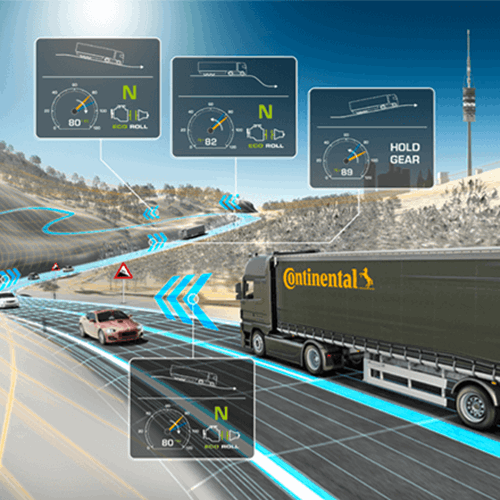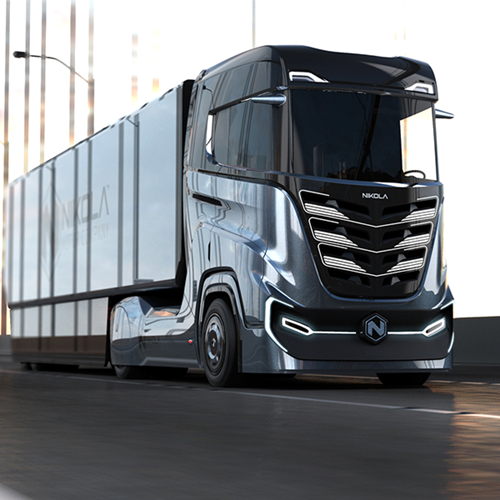Imagine a truck that not only knows exactly what to expect behind the next bend, but also what traffic situation will await on every kilometer of its journey. A truck that has information about, where the next end of the traffic jam will be, when it will rain, and where the road will be a little smoother or uneven. A truck that recognizes in advance when the traffic light in front will turn red and therefore drives to it in idle mode, saving fuel.
Such a truck is not a utopia of tomorrow. With the eHorizon technical platform, Continental is already laying the ground work for this.
The foundation stone for automated driving
eHorizon is a technical platform that – to put it in figurative terms – expands the horizon of vehicles in such a way that, ideally any kind of loss of time, unnecessary fuel consumption and even accidents are a thing of the past. The principle behind eHorizon is simple yet revolutionary: a cloud, i.e. an external server, provides vehicles with real-time data on topography, navigation, traffic, weather and road conditions. With the help of this information, vehicle computers can draw a three-dimensional picture of the route ahead and thus optimize journeys in a comprehensive way. For example, by increasing the speed before an up-gradient, but reducing it accordingly before a down-gradient.
In three steps towards intelligent driving
eHorizon is structured in three stages. The service is not yet fully available today, mainly due to the expansion of a 5G network that eHorizon needs to keep latencies small enough.
The first stage, the static eHorizon, is already ready for serial production. It helps drivers save fuel with high-resolution maps and GPS signals.
The next stage is called connected eHorizon. It is not only providing the vehicles with commercial data, but also exchanges real-time information with other networked vehicles with a cloud, which are captured by the vehicle’s own sensors. In this way, detailed route characteristics such as temporary speed limits, construction sites or implementing rain are registered and forwarded to the cloud – the eHorizon.
In the final stage, the dynamic eHorizon, the digital map material will be updated in real time by the map specialist HERE through networking with the location-based cloud. This means that all vehicles can plan the ideal route and always react optimally to all events relevant to the journey. The dynamic eHorizon can then look up to 8 kilometers ahead and is able to activate the so-called Eco Coasting function. This allows the truck, for example, to roll towards the end of a traffic jam when idling.
The benefits are manifold
The static eHorizon has already been attested by TÜV with a fuel saving of 6%. In full operation, the technology should ultimately reduce fuel consumption by a whopping 20% - an enormous competitive advantage in a market dominated by cost pressure. Hybrid vehicles, for example, can also drive longer without the help of the combustion engine if they are informed that an approaching gradient will enable the battery to be charged quickly. This function is already available today with the “Cruise Control with Active Prediction”. The lower fuel consumption also means lower CO2 emissions and thus increased environmental friendliness. Rear-end collisions, which account for a large proportion of all truck accidents, will soon be a thing of the past thanks to the system.
